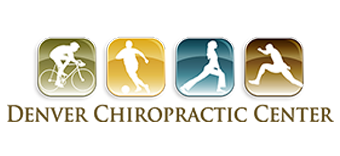Carpal Tunnel Syndrome – Are There Other Tunnels?, by the Active Release certified doctors at Denver Chiropractic Center
Carpal Tunnel Syndrome – Are There Other Tunnels?
Carpal Tunnel Syndrome (CTS) refers to the median nerve being pinched in a tunnel at the wrist. As the name implies, “carpal” refers to the 8 small bones in the wrist that make up the “U” shaped part of the tunnel and “syndrome” means symptoms that are specific and unique to this condition. As we learned last month, CTS can be affected by nerve pinches more proximal to the wrist, such as at the forearm, elbow, mid-upper arm, shoulder or neck.
To make matters more complex, there are two other nerves in the arm that can also be pinched in different tunnels, and the symptoms of numbing and tingling in the arm and hand occur with those conditions as well. This is why a careful clinical history, examination, and sometimes special tests like an EMG/NCV (electromyogram/nerve conduction velocity) offer the information that allows for an accurate diagnosis of one or more of these “tunnel syndromes” in the “CTS” patient. Let’s look at these different tunnels and their associated symptoms, as this will help you understand the ways we can differentiate between these various syndromes or conditions.
Let’s start at the neck. There are seven cervical vertebrae and eight cervical spinal nerves that exit the spine through a small hole called the IVF (intervertebral foramen). Each nerve, like a wire to a light, goes specifically to a known location which includes: the head (nerves C1, 2, 3), the neck and shoulders (C4, 5), the thumb side of the arm (C6), the middle hand and finger (C7) and the pinky side of the lower arm and hand (C8). If a nerve gets pinched at the spinal level (such as a herniated disk in the neck), usually there is numbness, tingling, and/or pain and sometimes, usually a little later, weakness in the affected part/s of the arm and hand (or numbness in the scalp if it’s a C1-3 nerve pinch).
So, we can test the patient’s sensation using light touch, pin prick, vibration, and/or 2-points brought progressively closer together until 1-point is perceived and then comparing it to the other arm/hand. Reflexes and muscle strength are also tested to see if the motor part of the nerve is involved in the pinch. The exam includes compression tests of the neck to see if the arm “lights up” with symptoms during the test.
Next is the shoulder. Here, the nerves and blood vessels travel through an opening between the collar bone, 1st rib and the chest muscles (Pectorals). As you might think, the nerves and blood vessels can be stretched and pinched as they travel through this opening and can cause “thoracic outlet syndrome.” Symptoms occur when we raise the arm overhead.
Hence, our tests include checking the pulse at the wrist to see if it reduces or lessens in intensity as we raise the arm over the head. At the shoulder, the ulnar nerve is the most commonly pinched nerve, which will make the pinky side of the arm and hand numb, tingly, and/or painful. A less common place to pinch the nerves is along humerus bone (upper arm) by a bony process and ligament that is usually not there or resulting from a fracture. Here, an x-ray will show the problem.
The elbow is the MOST common place to trap the ulnar nerve in the “cubital tunnel” located at the inner elbow near the “funny bone” which we have all bumped more than once. Cubital tunnel syndrome affects the pinky side of the hand from the elbow down. The median/carpal tunnel nerve can get trapped here by the pronator teres muscle, thus “pronator tunnel syndrome.” This COMMONLY accompanies CTS and MUST be treated to obtain good results with CTS patients. The radial nerve can be trapped at the radial tunnel located on the outside of the elbow and creates thumb side and back of the hand numbness/tingling.
Any or all of these nerve can get “trapped” by the muscles that run near them. This is where Active Release Techniques (ART) treatment separates itself for other modalities. ART is the only system that trains providers how to check these entrapment spots muscle by muscle. Once identified, the trained and certified ART provider knows how to release the muscles and remove the pressure. This goes way beyond standard chiropractic treatment or basic physical therapy.
So now you see the importance of evaluating and treating ALL the tunnels when CTS is present so a thorough job is done (which is what we do at Denver Chiropractic Center). Try the LEAST invasive approach first – non-surgical treatment – as it’s usually all that is needed!



